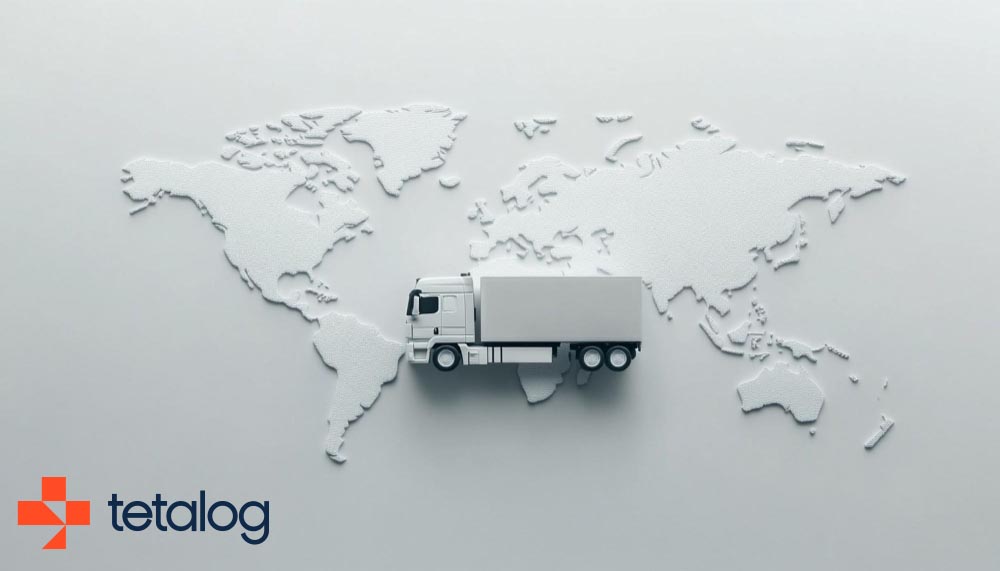
In the globalized world of trade, one of the top priorities for businesses is to manage supply chain processes quickly, securely, and cost-effectively. With the diversification of customer demands and increased competition in the market, end-to-end transportation has become one of the cornerstones of modern logistics. Today, comprehensive logistics services encompassing not only transportation but also warehousing, customs clearance, inventory management, distribution, and delivery processes offer significant advantages to brands.
What is End-to-End Logistics?
End-to-end logistics is not just about moving a product from one point to another, but about planning and managing every step of the process from the initial stage to final delivery. Transportation, which is critical in logistics, requires precision to ensure products are transported safely. Providing logistics solutions that ensure safety in the medical sector is particularly important when transporting medical products. Developing effective management strategies to safely transport sensitive medical products, increasing efficiency, and keeping costs under control are of great importance. End-to-end supply chain planning covers the entire process, from raw material procurement to the delivery of the product to the end consumer. Tetalog Logistics provides effective solutions for the safe transportation of equipment and products, ensuring efficiency in the logistics sector. Visit our page for more information about our healthcare logistics services!
In this context:
- Product procurement,
- Storage and inventory management,
- Transportation and distribution organization,
- Customs clearance and legal processes,
- Final delivery services are handled as a whole.
End-to-End Logistics Advantages
The end-to-end logistics advantages preferred by companies include the following:
Time Savings: This is of great importance in the business world. Managing all processes through a single provider enables companies to use their resources more effectively. It simplifies businesses' complex relationships with different suppliers, ensuring that the process moves forward more quickly and efficiently. It eliminates operational complexity and allows teams to focus more. Instead of dealing with multiple systems, businesses can track all transactions through a single platform.
Cost Control: By using integration and planning methods, businesses can minimize their overall expenses. Improvements made to transportation, storage, and inventory costs enable resources to be used more efficiently. With cost control, businesses can aim for more sustainable growth.
Transparency: Businesses can track products at every stage throughout the supply chain, which gives consumers and investors confidence. Information can be obtained about where products come from and what processes they have undergone. Transparency also helps businesses achieve their sustainability goals, as it ensures the effective use of resources.
Risk Management: Negative situations such as delays can be minimized when managed with the right strategies. Loss or damage risks become easier to manage. Effective risk management methods help ensure business sustainability by identifying potential damages in advance and taking the necessary precautions.
Key Elements in End-to-End Supply Chain Planning
Successful end-to-end supply chain planning encompasses not only transportation but also operational efficiency. This process requires effective management and coordination at every stage of the supply chain. With real-time tracking technologies, every movement of products is monitored; thus, potential issues can be identified and addressed immediately. Smart warehouses optimize inventory management and product placement. To increase efficiency, customized solutions are developed to meet the specific logistics needs of different industries. For example, cold chain requirements for the food industry and rapid parts supply for the automotive industry are taken into account. End-to-end supply chain planning is a complex process that must be managed effectively in a dynamic and variable environment.
Why Choose Door-to-Door Transportation?
Because end-to-end transportation for businesses reduces costs and minimizes errors by controlling planning, operations, and delivery processes from a single source. Working with a single solution partner instead of dealing with different logistics providers saves businesses a significant amount of time. End-to-end transportation helps resolve issues faster by providing a single point of contact.
What is the Difference Between End-to-End Logistics and Traditional Logistics?
While traditional logistics is limited to transportation, end-to-end logistics covers the entire process from procurement to delivery. It involves planning and managing every stage of the material flow from start to finish. While traditional logistics typically deals with specific tasks such as transportation and storage, the end-to-end approach focuses on optimizing every aspect of the supply chain to increase customer satisfaction and reduce costs.
Is End-to-End Supply Chain Planning Necessary for Small Businesses Too?
Yes. End-to-end supply chain planning is also critically important for small businesses. By increasing supply chain efficiency, it also positively impacts customer satisfaction. Small businesses can use these advantages to gain a stronger foothold in a competitive market environment.
You May Be Interested In: What is supply chain management?






